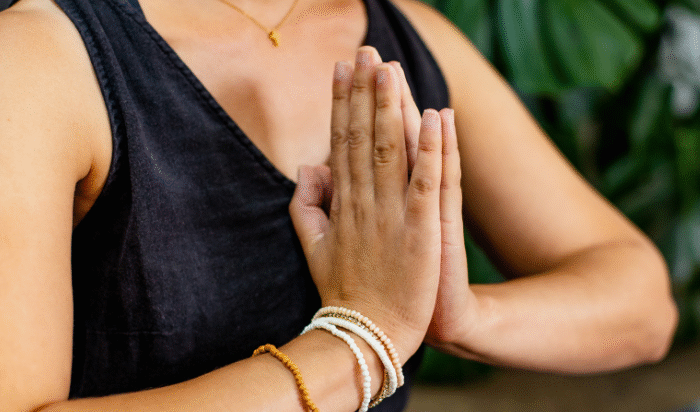Walking in Christ’s freedom: Jesus, yoga, & the Yoga Sutras of Patanjali
Yoga and Pantanjali’s path of freedom
Yoga is more than a type of exercise, stretching, and posture. Yoga is a state of being and a way of living. The ancient teachings of yoga are meant to inform our minds, instruct our hearts, and enhance our spiritual growth.
The ancient text, The Yoga Sutras of Patanjali, made up of a collection of 196 short verses, or aphorisms provides the earliest known definition of yoga and outlines an eight-limbed path of yoga.
According to Patanjali, when we overcome the obstacles in our minds and free ourselves from the dominance of our thoughts, we experience freedom.
Patanjali teaches his reader to examine their thought patterns and still their mind in order to be reunited with their True Nature. This is Patanjali’s path to freedom. A mind that is “still” is free from the influences of the temporal world and is thus able to realize its own True nature.
Freedom for Christians
Throughout the Bible, freedom is described as liberation from the power of sin and death in our lives. This freedom is not something that we can achieve on our own but is offered and found through our union with Jesus Christ.
In her private prayer book, Christian mystic Evelyn Underhill points to this understanding of freedom when she writes,
“You (Jesus) have loved us with an everlasting love:
You have forgiven us, trained us, disciplined us:
You have broken us loose and laid your commands on us:
You have set us in the thick of things and deigned to use us:
You have shown Yourself to us, fed us, guided us.
Be graciously pleased to accept and forgive our poor efforts,
And keep us Your free bond slaves forever.”
In Christ, we have been restored, re-established, and adopted into the family of God. Freedom is found in this new-identity and in this freedom Christians have been “broken loose” from temporal, earthly things that bind us and freed to be God’s “bond slaves forever”.
This freedom enables Christians to live for Christ alone and frees us to love with the same self-giving love that we have so freely received from Jesus. Eugene Peterson explains Christian freedom this way in The Message,
“It is absolutely clear that God has called you to a free life. Just make sure that you don’t use this freedom as an excuse to do whatever you want to do and destroy your freedom. Rather, use your freedom to serve one another in love; that’s how freedom grows. For everything we know about God’s Word is summed up in a single sentence: Love others as you love yourself. That’s an act of true freedom.” Galatians 5:13-14
Classical Yoga for Christians
Both The Bible and The Yoga Sutras of Patanjali agree that true liberation is the freedom to live a life of love from an eternal perspective, free from the pushes and pulls of our own thoughts, desires, and the influences of the world around us.
Christ-centered yoga, however, is tempered by the understanding that we alone cannot overcome our own minds. Instead the Spirit gives us the mind of Christ. This is a gift, or a grace, from God. This grace invites a response which requires effort..
Dallas Willard, in his book The Great Omission, speaks of this relationship between grace and effort in the Christian theology when he says,
“Grace is not opposed to effort, it is opposed to earning. Earning is an attitude. Effort is an action. Grace, you know, does not just have to do with forgiveness of sins alone.”
This “effort” may be what Paul speaks of in his letter to the Philippians, when he challenges his readers to “work out your own salvation with fear and trembling, for it is God who works in you, both to will and to work for his good pleasure.” However, The Bible is not a book about the human psyche and thus it does not specifically outline how to respond to God’s grace nor does it give us a step-by-step plan for working out our salvation. This is where the path of yoga, and the teachings of The Yoga Sutras can be a powerful tool for the follower of Christ.
Yoga and putting on the mind of Christ
Classical yoga outlines a path for students who are interested in responding to God’s grace by exploring the human capacity for reflection and digging deeply into the workings of the human mind and heart as we seek to have the mind of Christ.
Episcopal priest and Christian author Cynthia Bourgeault points to the underlying question and need for learning what it means to have the mind of Christ when she writes,
“Indeed, how do we put on the mind of Christ? How do we see through his eyes? How do we feel through his heart? How do we learn to respond to the world with that same wholeness and healing love? That’s what Christian orthodoxy really is all about. It’s not about right belief; it’s about right practice.”
Scriptures about having “the mind of Christ” are found throughout the New-Testament but the phrase “putting on the mind of Christ” is rooted in St. Paul’s teaching in Philippians 2:5: “Let the same mind be in you that was in Christ Jesus.” These words challenge Christians, not only to follow Jesus, but to seek his mind, his thoughts, and his way of seeing the world.
Putting on the mind of Christ is more than seeking a specific state of consciousness. It is the conscious ACTION of seeking God’s will… starting first in our own hearts and minds.
In the Lord’s prayer, Jesus teaches his followers to pray, “God’s will be done on earth as it is in heaven”. Putting on the mind of Christ is actively putting this prayer in ACTION by developing a heavenly mindset, a mind consumed with the things of God and desiring what the Spirit of God desires.
This is the mark of the Kingdom of Heaven and citizens of Heaven are people who submit themselves to the rule and reign of a Heavenly King and the new kind of government that Jesus ushers in with His ministry on earth.
The Yoga Sutras and putting on the mind of Christ
The Yoga Sutras can equip Christians to respond to God’s grace as we co-labor with God to usher in the kingdom of Heaven here on earth. An introspective text on the human psyche, The Yoga Sutras can give Christians instructions and insights as they sort through their thoughts, memories, and accumulated experiences in order to put on the mind of Christ.
Both The Bible and The Yoga Sutras emphasize our deep need for freedom and both agree that True liberation is the freedom to live life from an eternal perspective, free from the things that bind us… liberated from the pushes and pulls of our own thoughts, desires, and the influences of the world around us.
When seeking to walk in the freedom offered to us in Christ, The Yoga Sutras, when studied from a Christian perspective will help Christians to:
- Remember what we have forgotten… our True Nature and our identity in Christ.
- Understand obstacles to our spiritual growth.
- Recognize and confess sin patterns in our mind- heart complex.
- Hold each thought captive to Christ and cooperate in the work of transformation and sanctification.
- Surrender our will to the will of God.
- Set distractions aside in order to set our minds on the things above.
Dear reader, I am curious, What binds you? How are you chained to earthly and temporal influences in this world? Where do you need God to loosen these chains and break you free?
My prayer for you, and for me, is that we would stand firm on the everlasting love poured out in Christ and that we would walk in freedom following Jesus as His free bond slaves forever.
Practice Christ-Centered Yoga With Me
I’d love to invite you to practice Christ-centered yoga with me inside my online yoga membership, The Yoga Abbey. We offer monthly yoga flows, meditations, and contemplative prayers. Getting Still readers can get one week free with the code 1week. Check out The Yoga Abbey today!







